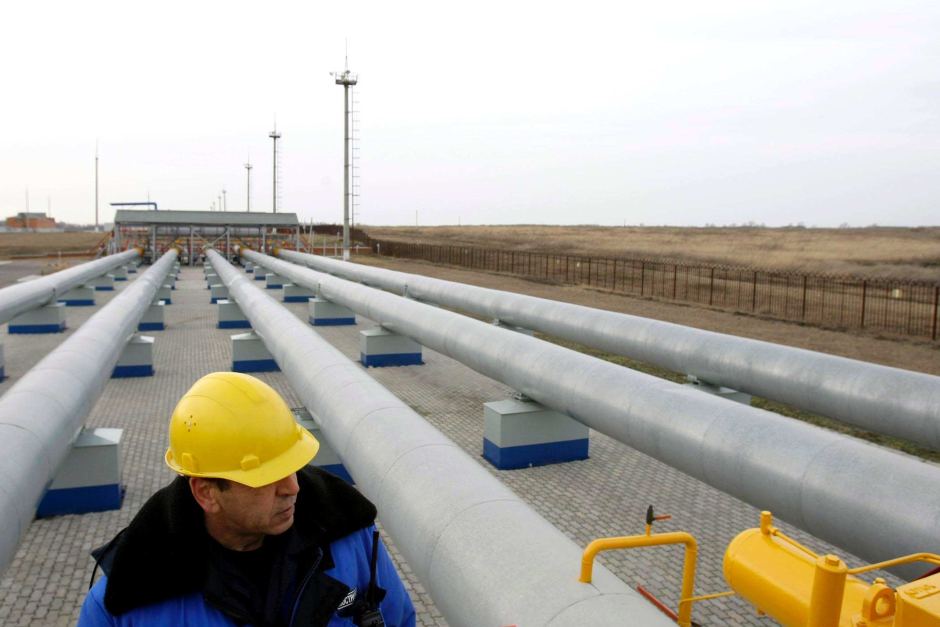
Ukraine Responds to Russia’s Suspension of Gas Supplies
Publication: Eurasia Daily Monitor Volume: 11 Issue: 112
By:

Following Russian President Vladimir Putin’s warnings, Gazprom has fully halted natural gas supplies to Ukraine since June 16, citing debts calculated by Moscow for past deliveries of gas to Ukraine (see EDM, June 19).
The Ukrainian government views Gazprom’s move in the broader context of Russia’s military aggression in eastern Ukraine and Moscow’s political destabilization campaign following Ukraine’s presidential election, the success of which stung the Kremlin.
Apart from that broad context, Kyiv offers to continue the European Union–brokered negotiations with Moscow toward debt settlement; litigates with Russia in the Stockholm Arbitration Court; seeks to demonstrate Ukraine’s reliability as a transit country for Russian gas to Europe; counts on reverse-flow supplies of gas from EU member countries, so as to offset a portion of the Russian supply shortfall; and is working out energy-sector reform plans, inviting Western advice.
Those are short-term measures designed to mitigate the impact of Russia’s supply halt and to help tide Ukraine over the next cold season, in the event that Russia continues withholding supplies fully or partially. Meanwhile, Ukraine’s government proposes to continue negotiations with Gazprom on repaying a $4.5 billion portion of the Ukrainian debt, contingent, however, on Gazprom lowering the sale price to the range of $300 per one thousand cubic meters of Russian gas (Interfax-Ukraine, June 18).
Ukraine’s procurement company in these negotiations, Naftohaz, finds itself in a better position vis-à-vis Gazprom than is generally assumed. Naftohaz is practically the sole customer within easy reach of Gazprom for most of the gas volumes earmarked for Ukraine annually by the Russian monopoly. Gazprom would have to scramble to find other customers for contracted gas volumes that Gazprom withholds from Ukraine.
Addressing the parliament on June 17, Prime Minister Arseniy Yatsenyuk characterized the suspension of gas supplies as an aspect of Russia’s overall “aggression against the Ukrainian state, along with the annexation of Crimea, sending armed gangs to Donbas, instituting trade sanctions, and [aiming] to destroy Ukraine’s independence and nationhood” (Ukrinform, June 17).
The Ukrainian government envisages the possibility that Gazprom would continue withholding supplies beyond September into the cold season. Moscow would hope, thereby, to pressure Ukraine into diverting Europe-bound gas volumes from Ukraine’s transit system and using those volumes for Ukraine’s own consumption. According to Ukraine’s Energy Ministry, such a scenario could discredit Ukraine as a major gas transit country, and help Gazprom obtain EU approval for the South Stream pipeline project to circumvent Ukraine (Natural Gas Europe, June 18).
Thus, the pressure is on for Ukraine to devise some solutions ahead of the cold season. Ukraine’s underground storage sites currently hold some 13 billion cubic meters (bcm). As a general assumption, at least 18 bcm are required to be in those storages before the start of the cold season, so as to ensure supplies to Europe, assuming that Ukraine does not dip into those stored volumes in a force-majeure situation for Ukraine.
UkrTransHaz, the gas transit pipeline system’s operator, is ready to implement a reverse-flow supply agreement with Slovakian counterpart Eustream, under an April 28 bilateral agreement of intent. Eustream is prepared to supply significant gas volumes from Germany, Austria, the Czech Republic, and Hungary to Ukraine, all via Slovakia’s territory (Eustream press release, June 16). Those volumes are almost certainly of Russian provenance, purchased at European market prices by companies in those countries, and available for re-sale to Ukraine with a commercial markup, but still below the extortionate price that Gazprom proposes to Ukraine (see EDM, June 19).
Those are tactical solutions at the present stage. In a strategic perspective, raising Ukraine’s natural gas extraction significantly beyond the existing 18 billion to 20 billion cubic meters annually, or exploring and developing shale gas in the country, are possible medium-term solutions.
Prior to Gazprom’s supply halt, Prime Minister Yatsenyuk had aired general ideas about privatizing Ukraine’s gas transit system with European and American investors; purchasing Russian gas by European companies at the Russia-Ukraine border, instead of the Ukraine-EU border, thereby ensuring Ukraine’s future as a transit country for Russian gas to Europe; monitoring the gas transit flow via Ukraine by the EU and Ukraine jointly; and raising the domestic tariffs for natural gas to market levels, phasing out subsidies.
With the newly elected head of state, Petro Poroshenko, riding a popularity wave, the post-Maidan government enjoying public confidence, and a strong backlash to Russian pressures on Ukraine, including Gazprom’s pressures, the timing looks right for bold reforms in Ukraine’s gas sector without any delays.




